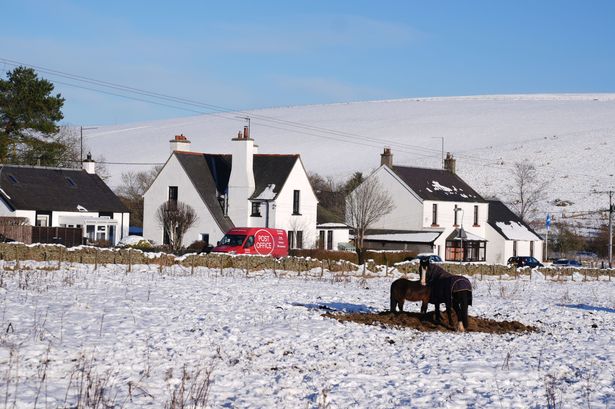The United Kingdom is bracing itself for a prolonged period of intensely cold weather, with forecasts predicting a further plunge in temperatures over the coming days. Arctic air masses are expected to dominate the weather patterns, bringing sub-zero conditions to much of the country. Some regions, particularly those under clear night skies, could experience temperatures as low as -20°C, presenting significant challenges for vulnerable populations and infrastructure. The Met Office has issued widespread warnings for ice and snow, urging caution and preparedness for hazardous travel conditions and potential disruptions. This extended cold snap follows a period of already low temperatures, raising concerns about the cumulative impact on energy demands, public health, and the natural environment.
The anticipated drop to -20°C in certain localized areas marks a significant intensification of the cold weather already gripping the nation. These extreme temperatures, while not unprecedented in the UK, are infrequent and pose serious risks. The combination of extreme cold and clear skies creates ideal conditions for rapid radiative cooling, where heat escapes from the Earth’s surface into space. This phenomenon is particularly pronounced in rural areas and valleys where cold air can settle and become trapped. Urban areas, while generally warmer due to the urban heat island effect, will still experience significantly below-freezing temperatures, requiring residents to take precautions to protect themselves and their properties from the cold.
The Met Office warnings for ice and snow highlight the hazardous travel conditions expected across much of the UK. Freezing rain and sleet can create treacherous surfaces on roads and pavements, increasing the risk of accidents and injuries. Accumulating snow, particularly in northern and higher-elevation areas, will further disrupt transportation networks, potentially leading to road closures, flight delays, and cancellations. The warnings emphasize the importance of avoiding unnecessary travel during these hazardous conditions and, if travel is essential, taking precautions such as checking road conditions, allowing extra time for journeys, and carrying emergency supplies.
The prolonged cold snap also raises concerns about the impact on the national energy grid. Increased demand for heating as temperatures plummet puts significant strain on energy resources, potentially leading to supply disruptions or price spikes. The government and energy providers are closely monitoring the situation and implementing measures to ensure energy security during this critical period. Advice to the public emphasizes energy conservation practices such as lowering thermostat settings, sealing drafts, and utilizing efficient heating methods to minimize energy consumption and reduce strain on the grid.
Beyond the immediate impacts on transportation and energy, the extreme cold poses significant risks to public health. Prolonged exposure to freezing temperatures can lead to hypothermia and other cold-related illnesses, particularly among vulnerable populations such as the elderly, young children, and those experiencing homelessness. Health authorities are urging individuals to take precautions to stay warm, including wearing multiple layers of clothing, staying indoors as much as possible, and checking on vulnerable neighbors and family members. Public health campaigns are also highlighting the importance of recognizing the signs of hypothermia and seeking medical attention promptly if necessary.
The extended Arctic conditions will also have implications for the natural environment. Freezing temperatures can disrupt ecosystems, affecting wildlife populations and vegetation. Frozen water sources can limit access to drinking water for animals, while prolonged snow cover can impede foraging and migration patterns. The sudden temperature drop can also stress plants and trees, potentially leading to damage or die-off. Furthermore, the extreme cold can exacerbate existing environmental issues such as air pollution, as cold air traps pollutants closer to the ground, impacting air quality and respiratory health. The long-term consequences of this extended cold snap on the natural environment will require ongoing monitoring and assessment.














